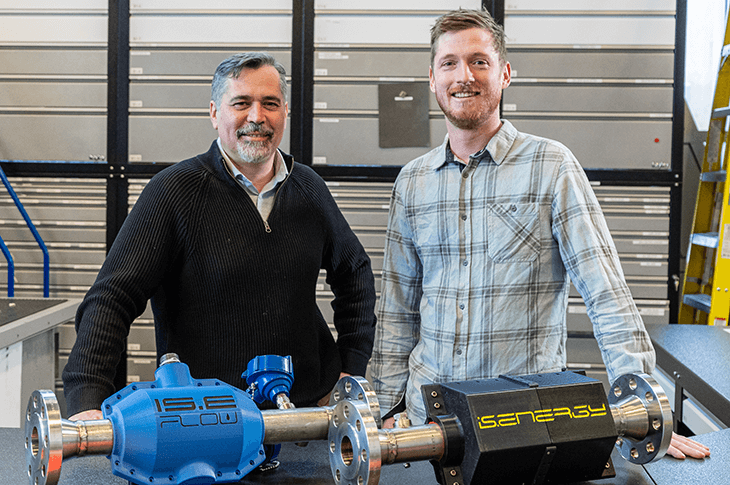Impossible Sensing (IS) Energy’s goal is to trigger mass adoption of their patent-pending, fully optical solution to monitor real-time flow rates of oil, water and gas phases in multi-phase flows in the on-shore oil market. To bring this revolutionary idea to the energy industry, Calgary-based IS Energy partnered with SAIT’s Centre for Innovation and Research in Advanced Manufacturing and Materials (CIRAMM), one of the centres in the Applied Research and Innovation Services (ARIS) hub.
The optical technology, developed by Dr. Pablo Sobron, CTO of IS Energy, was originally created for NASA. It is used on the Mars Perseverance rover to detect signs of life, specifically complex hydrocarbons, on Mars. Now, that same technology is being applied to the harsh world of the oilfield to help companies gain greater insight into their production. It’s robust enough to withstand the extremes of Canadian weather and the pressure of the output from a wellhead, while remaining cost-effective.
“Our applied research model affords us the opportunity to solve real-world challenges for a broad range of industries and those innovations in turn support the Alberta economy,” says Jamie McInnis, Director, ARIS. “For the FLOW meter project, the partnership with IS Energy envisioned a new application of technology which would provide improvement to performance and sustainability in the energy industry.”
Key takeways
- In 24 months, ARIS worked with IS Energy to go from an initial design concept to a field-ready prototype.
- Leveraged expertise of ARIS research partners and in-house electronics design for successful FLOW MKIII prototype.
- Advanced design, fabrication and testing services supported small-scale project needs for pre-commercialization product.
Current state: oil production monitoring
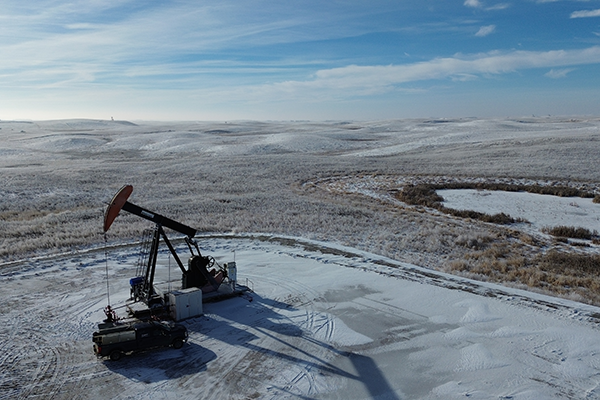
Currently, there are two main methods used to monitor the output from individual oil wells: multiphase flow meters and test separation tanks.
Multiphase flow meters are used mainly on large offshore facilities and require potentially hazardous materials, expensive equipment, regular calibration and specialized expertise to maintain — all of which make it a cost-prohibitive solution for the onshore market.
At conventional wells across southern Alberta and Saskatchewan, a wellsite separator is used to determine the production of multiple wellheads in the immediate area. These separators have a large footprint, are unable to measure the production of an individual wellhead in real time, emit greenhouse gases and require personnel on-site to complete the measurement.
Ariel Torre, co-founder and CEO of IS Energy, frames the context for the innovation within the larger area of concern. “Energy security is a critical problem for the world. Our company’s innovations in sustainable oil production is helping in the transition to cleaner energy.”
A cost-effective real-time monitoring solution
To understand the potential of the FLOW meter in oil production, we can look to the banking app on our phones and compare that to something most of us remember receiving every month in the mail — the monthly bank statement. If you’d like to make informed decisions about your money, then having real-time information about your balance at your fingertips will help you adjust as you go, instead of waiting to make needed adjustments on a monthly basis. FLOW enables real-time measurement of watercut and molecular composition in multi-phase oil and gas flows to increase production visibility and improve insights.
"Our innovative flow meter breaks cost barriers, offering full well visibility for precise real-time production optimization,” says Torre. “Its ultimate value lies in its increased operational efficiency while delivering an environmental impact reduction, replacing emissions-prone test separators and paving the way for emissions-free facilities."
The multi-phase FLOW meter can measure oil, gas and water flow without the need to separate each one first. This capability realizes several benefits beyond the real-time monitoring, including:
- measures multiphase flow without the need for calibration
- cost effective instrument can be used at individual wellheads
- reduced footprint, device is the size of a small suitcase compared to test separators, which are typically the size of a car
- valves and actuators on a test separator produce greenhouse gases; FLOW replaces the test separator and thus reduces emissions
- automates data collection, analysis and reporting, which eliminates the need to pause production and deploy personnel for measurement
Advances in cloud infrastructure have made this project possible as there are now data models that can process the high volumes of data needed to analyze the oil, gas and water at different flow regimes. As the collection and analysis of data improve, so do the algorithms and machine learning techniques, enhancing data-driven decision-making. With FLOW, oil producers can precisely adjust their operations at the level of each individual wellhead, boosting efficiency.
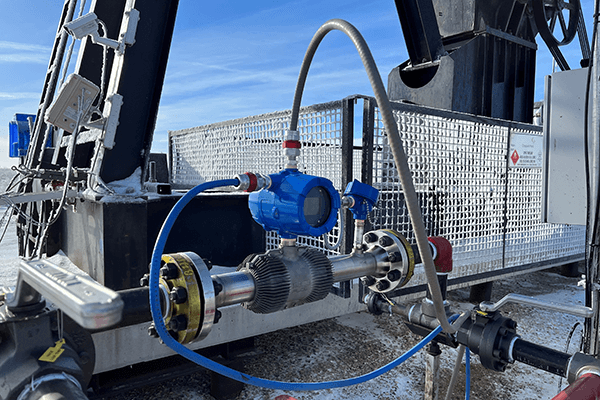
“At the Surface Mount Technology lab in the ARIS hub, we have the expertise and technology to support the small-scale needs of prototypes as the device is developed, which allows a stronger pre-commercialization product,” says Paul Chidley, ARIS Lead Hardware Developer. “For the FLOW meter, we worked with a multi-discipline team to develop a self-contained, on-board electronics solution that supports the data analysis needed in this project.”
FLOW project timeline
Within ARIS, the Centre for Innovation and Research in Advanced Manufacturing and Materials (CIRAMM) led the development from concept, through several prototype versions and ultimately to the recent successful field test. The three-year project started from an initial design concept and is now in the final step before commercialization.
CIRAMM utilized their conventional and computer numeric control machine tools to produce each component used in the prototype series: MKI, MKII, and MKIII. These machines included conventional lathes, 3, 4 and 5 axis CNC machining centres.
The clear economic benefit for the energy industry, as well as the environmental benefit has made this project an exceptional fit for CIRAMM and the ARIS hub.
Evan Altenhof
Research Lead with CIRAMM
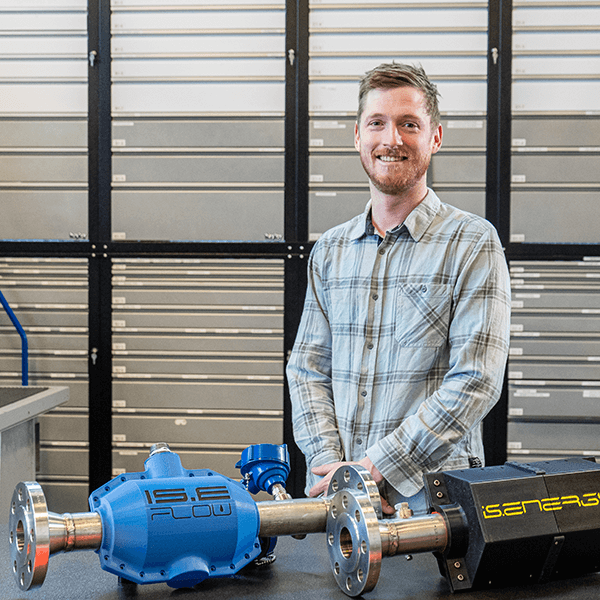
FLOW MKI | March – June 2022
MKI’s role was to prove the FLOW concept’s viability, advancing IS Energy’s technology from a theoretical stage to a more developed phase. Although MKI wasn’t ready for field deployment due to its inability to endure necessary pressures, this phase also saw the completion of a computer designed to process raw data for subsequent use in MKII.
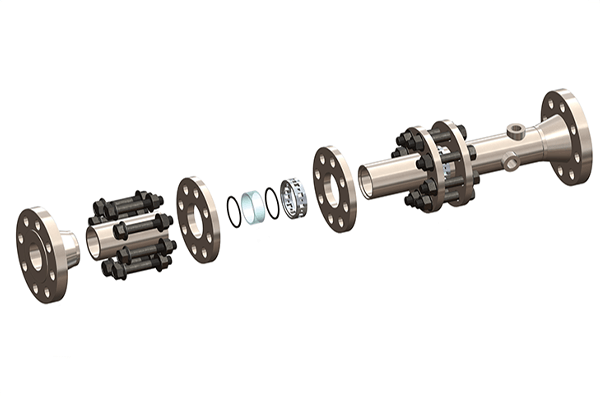
FLOW MKII single viewport window small-scale testing | August – September 2022
Despite MKI’s limitations, pressure testing was conducted to confirm the concept’s commercial viability. This testing aimed to validate a sealing and fastening technique for integrating windows into a pipe, ensuring they could withstand 1,250 PSI for 15 minutes, in line with customer requirements. The design, based on IS Energy’s blueprint for the viewports, was produced by CIRAMM, which also supported IS Energy in managing the hydrotest.
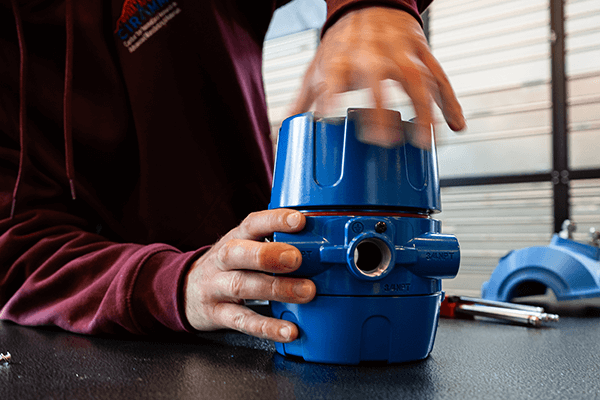
FLOW MKII design and fabrication | September – October 2022
In this development stage, the focus was on enhancing MKI into a field-ready prototype capable of withstanding wellhead pressures. Building on the success of MKII’s single viewport from the previous phase, the design now took into account the pipe’s wall thickness. CIRAMM completed the remaining components. In December 2022, IS Energy conducted field tests on MKII for a short-term proof of concept. This was a major milestone, confirming the prototype’s effectiveness in real-world conditions. It showcased its successful operation in a live production well and proved its readiness for practical application.
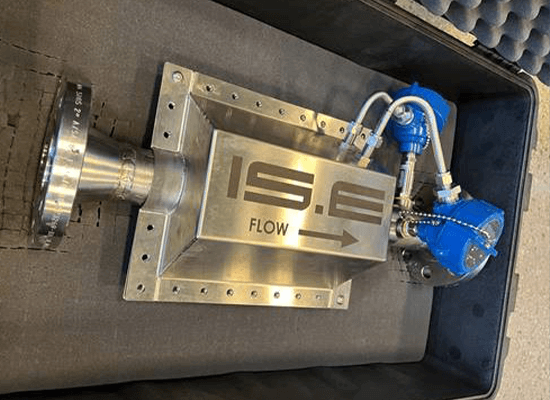
COSIA Innovation Hacks challenge win | January 2023
Canada’s Oil Sands Innovation Alliance (COSIA), the innovation group of Pathways Alliance, named IS Energy the winner in a global challenge to find a tool that will help move steam reduction technologies in oil sands operations closer to reality. The field working prototype and short-term proof of concept test helped IS Energy stand out in the competition, which included 50 prospective candidates from around the world including the United Kingdom, Sweden and an Ivy League university.
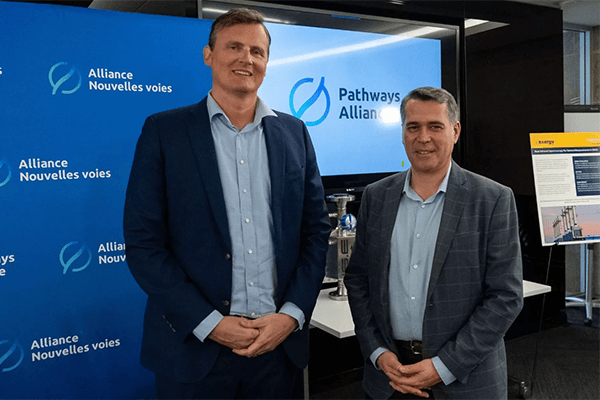
FLOW MKIII single viewport window small-scale testing | May – June 2023
The objective of this phase was to streamline the design by reducing the thickness of the pipe wall and eliminating non-essential components. CIRAMM conducted a detailed finite element analysis (FEA) to verify that the metal pipe section could withstand pressure, as confirmed through computer simulations. This process involved a comprehensive redesign that took into account standard pipe dimensions, the creation of a single viewport, and a hydrostatic pressure test to ensure durability and functionality.
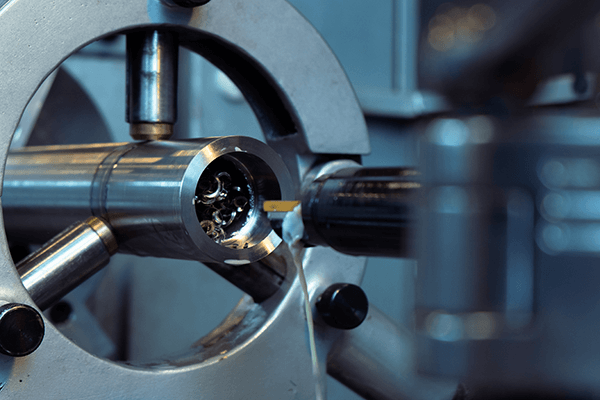
FLOW MKII.5 Modification of MKII for World Petroleum Congress presentation | September 2023
A modified version of MKII was showcased at the Pathway Alliance booth during the World Petroleum Congress to demonstrate the concept envisioned for MKIII.
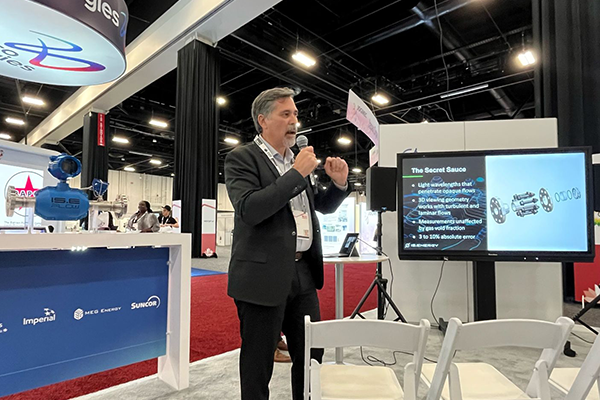
FLOW MKIII electronics design | July 2023 – present
Paul Chidley, ARIS Lead Hardware Developer, designed and manufactured smaller on-board electronics to support the automated data collection, analysis and reporting capabilities of the instrument.
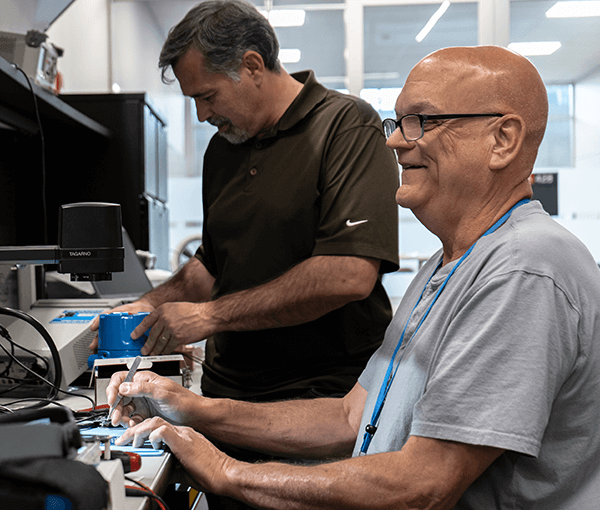
FLOW MKIII mechanical design and fabrication | July 2023 – present
This phase marked the culmination of IS Energy’s technology development, successfully transitioning the system to a commercially viable product. After conducting two flawless field tests at a wellsite, which continue to operate and collect valuable data, the technology has proven its reliability and effectiveness. The collaboration with Exergy Solutions Inc., using advanced laser powder-bed fusion for the external housing, has further refined the product’s design and durability. With these milestones achieved, the system is now fully developed and ready for commercial deployment, ready to disrupt its market.
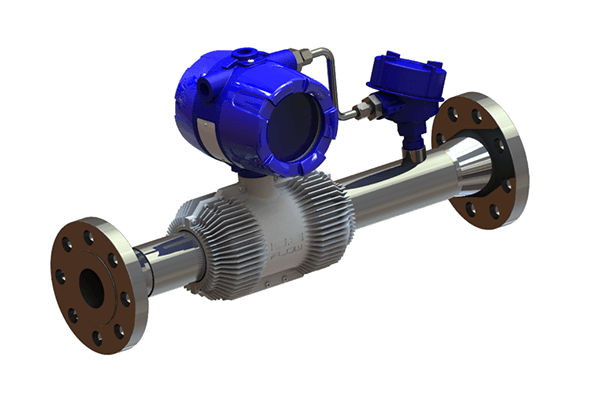
Working with the ARIS team was an absolute delight. They showed great dedication, professionalism, and willingness to go the extra mile, which ultimately led to the success of this project
Ariel Torre
Co-founder and CEO of IS Energy
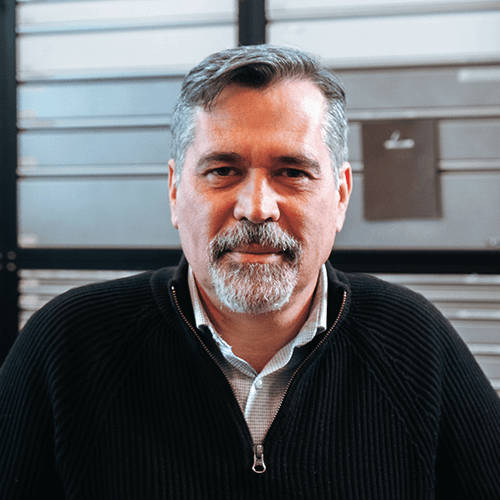
Upcoming developments
As development continues on the FLOW meter project, there are several other areas of application where the technology could be part of a more sustainable energy system. In energy-intensive Steam Assisted Gravity Drainage (SAGD) operations in the oil sands, measurement that can continuously identify the amount of solvents recovered in oil production could significantly reduce emissions because it would reduce the use of steam. The device also shows potential in mining and wastewater operations.
In the nearer term, IS Energy will attend the global tech conference SXSW this spring as part of the contingent for Alberta Innovates, an innovation network. Also this spring, the FLOW meter will be installed at SAIT’s MacPhail School of Energy as part of the simulated wellsite on campus to support student learning in a hands-on environment.
"Our goal is to not just establish, but to rapidly scale a company built on this cutting-edge innovation. With over four million wells worldwide, the potential impact of our technology to reduce emissions while enhancing efficiency is immense. We’re on the launchpad, set to make this vision a reality from our new facility in Calgary," says Torre.
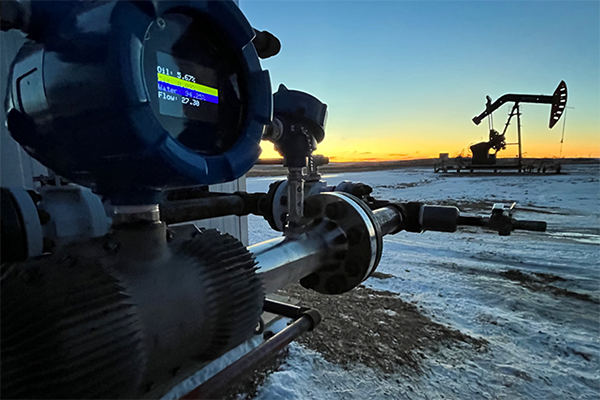
LOW MKIII in place in the field.
About Impossible Sensing Energy
We work with our customers in the oil and gas industry to identify critical data and measurement gaps, and introduce industry-first solutions to close those gaps. Our solutions build on pioneering optical sensing technologies developed for advanced space exploration that deliver unprecedented sensitivity and reliability.
We are an affiliate of Impossible Sensing, a US-based firm that creates leading-edge technologies to find life and resources on every planet and ocean in the solar system. At IS Energy, we turn these innovations into solutions for producers to deliver cleaner oil and gas while capturing economic benefits.
Thanks to the team
Special thanks to the SAIT employees who have significantly contributed to the project’s success:
- Dr. Hamid Rajani, PhD, Scientific Lead, CIRAMM
- Paul Chidley, Lead Hardware Developer, ARIS
- Samuel Owen, Data Scientist, Impossible Sensing
- Cody Thompson, Sensor Advisor (Biophysics) , Impossible Sensing
- Nikolai Koutaitsev, Mechanical Engineering Technologist, IS Energy
- Hamidreza Dehdashtian, Mechanical Engineer and Simulations, CIRAMM
- Sander Schrijvers, Mechanical Engineering Student Intern, CIRAMM
- Tyler Bergh, Machinist (Fabrication), CIRAMM
- Mara Ordonia, Lab Technician (Fabrication), CIRAMM
- Kirsten Rose, Lab Technician (Fabrication), CIRAMM
- Dylan Stewart , Senior Lab Supervisor, Advanced Materials Characterization, CIRAMM
- Brian Hriskevich, Project Coordinator (Electronics Support), ARIS
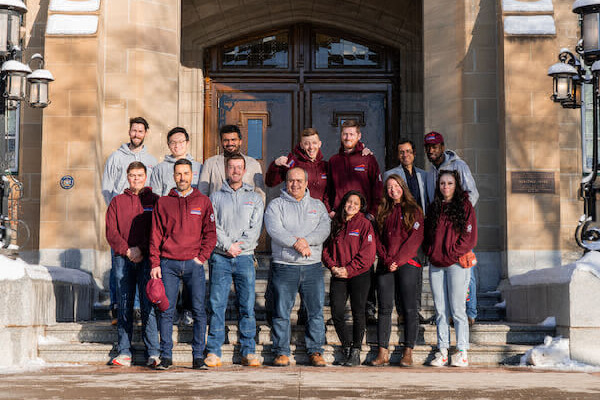
Centre for Innovation and Research in Advanced Manufacturing and Materials
We help identify and address challenges the industry faces as manufacturing and materials systems evolve into a smarter and cleaner solutions.
Read more
- CTV News | Calgary company's technology, used in NASA Mars mission, could help reduce oilsands emissions
- CityNews Calgary | Calgary technology game changer in reducing emissions
- Journal of Petroleum Technology | Common Ground: The Unique Synergy Between the Oil Field and Aerospace (membership required)
- LINK Magazine | Going with the FLOW
- UCalgary News | Sensor technology used on Mars now deployed on Earth
- BNN Bloomberg | Space technology to be used in oilsands
Partner with us
 Our expert researchers, equipment, and facilities support business planning, product design and development, fabrication and prototyping, product testing, and technology verification, culminating in industry education and public outreach.
Our expert researchers, equipment, and facilities support business planning, product design and development, fabrication and prototyping, product testing, and technology verification, culminating in industry education and public outreach.

Oki, Âba wathtech, Danit'ada, Tawnshi, Hello.
SAIT is located on the traditional territories of the Niitsitapi (Blackfoot) and the people of Treaty 7 which includes the Siksika, the Piikani, the Kainai, the Tsuut’ina and the Îyârhe Nakoda of Bearspaw, Chiniki and Goodstoney.
We are situated in an area the Blackfoot tribes traditionally called Moh’kinsstis, where the Bow River meets the Elbow River. We now call it the city of Calgary, which is also home to the Métis Nation of Alberta.
